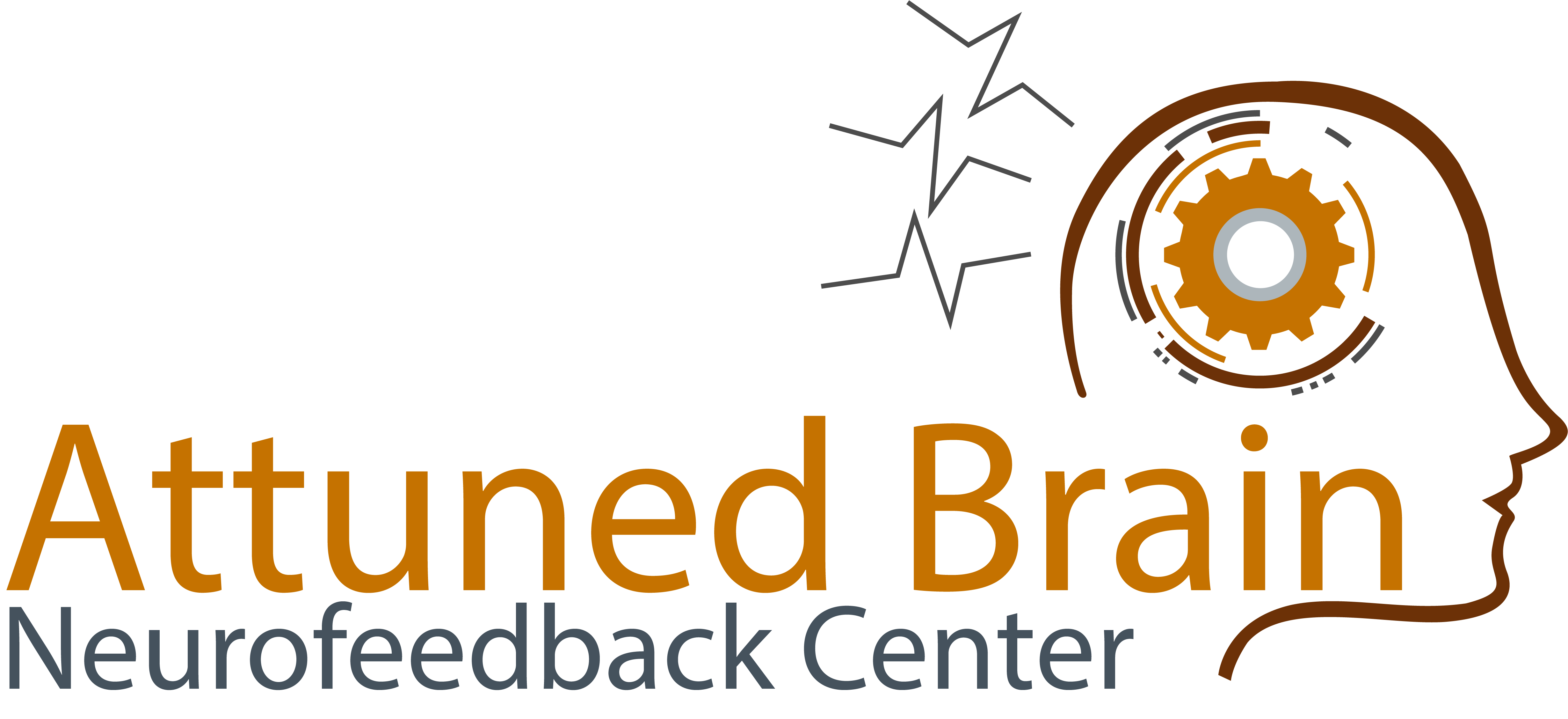Neurofeedback
What is Neurofeedback?
Non-intrusive and non-verbal therapy
Neurofeedback therapy is a non-intrusive and non-verbal therapy. It is designed to encourage the brain to adopt more beneficial brain activity and promote better self-regulation and resilience.
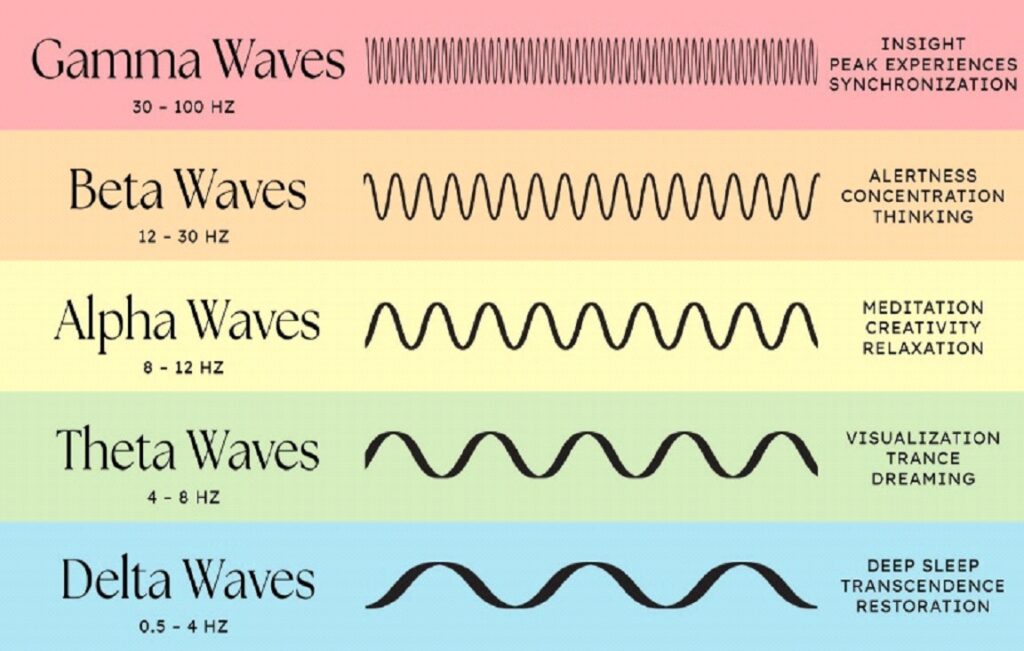
Neurofeedback therapy Overview
The therapy centers around monitoring the neural activity in the brain. The training approach is rooted in reinforcing normal brain patterns, wherein immediate feedback is given to the individual with the goal of rewarding and strengthening desired brain activity while discouraging undesirable activity, therefore enhancing brain function.
Neurofeedback therapy can assist individuals who struggle with a range of mental health issues, including but not limited to depression, anxiety, ADD/ADHD, PTSD, trauma, treatment for stress, emotional regulation, behavioral problems, pain management, migraines, trauma healing, cluster headache causes, sleep disturbances, epilepsy and more.
How does it work?
Many individuals opt for neurofeedback due to its gentle nature. Unlike traditional talk therapy, it requires less extensive discussion of personal events and emotions. It is particularly well-suited for children and adolescents, as they can experience improvements with neurofeedback when talk therapy is not successful.
For example, the clients receiving Neurofeedback training don’t actively engage in any specific actions during the sessions. The primary task for a client is to enjoy the feedback being displayed. The feedback is usually presented within the context of a movie or a game. For instance, the movie may pause or a spaceship in the game may speed up, and all you need to do is pay attention.

utilize the feedback for its own benefit
Your brain is naturally skilled at adjusting to meet its current needs. It can independently determine how to utilize the feedback for its own benefit. The goal is for your brain to learn how to move toward a more resilient and self-regulated state.
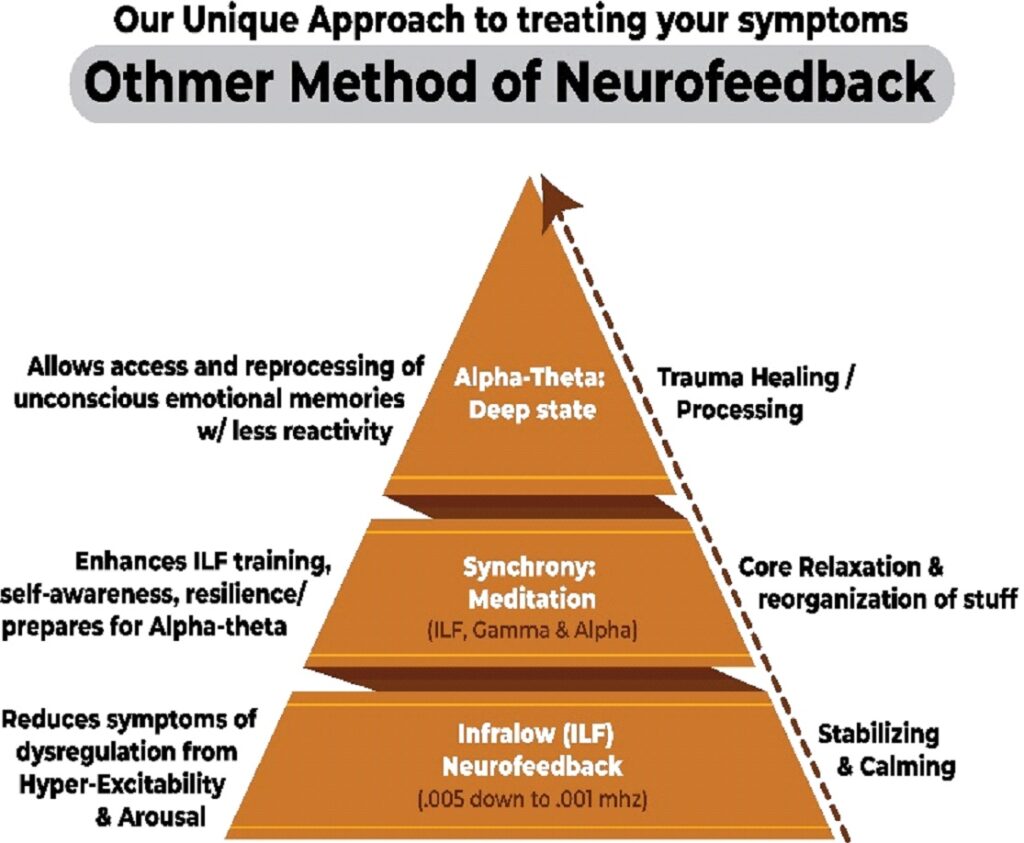
aPPROACH OF NEUROFEEDBACK PRACTICED
Attuned Brain uses a well-established and effective Neurofeedback Therapy that was created by the Othmers. They pioneered the method using low frequencies to train the brain across three different forms of neurofeedback. Below are the different forms of neurofeedback provided at Attuned Brain.

Infralow (ILF) neurofeedback
A type of EEG-based neurofeedback that targets reward frequencies that are lower than those typically measured in EEG. It operates in the sub-Hertz (sub-1 Hz) range, including frequencies like 0.001 mhz or below. Infralow neurofeedback is believed to have a different set of applications and may be used for conditions that do not respond well to conventional EEG neurofeedback.

Alpha-Theta neurofeedback
A type of neurofeedback that is effective in facilitating the processing and resolution of trauma, PTSD and other unresolved issues. This approach enables individuals to subconsciously address intense past emotional experiences without re-experiencing them or facing the risk of further trauma. When the brain is prepared for this method, it can lead to a profoundly soothing, rejuvenating, and transformative experience.

Synchrony neurofeedback
A form of EEG neurofeedback that can assist in attaining a state of tranquil concentration. Numerous individuals describe how synchrony neurofeedback makes it easier to reach a mindful or meditative state compared to other methods. It also enhances the effects of the Infralow neurofeedback.
neurofeedback is evidence-based
Neurofeedback training is a scientifically supported supplementary therapy. Its effectiveness was initially proven about five decades ago, and with advancements in technology, the training techniques have become more efficient, offering an enjoyable feedback method like watching movies or playing video games.
Neurofeedback is grounded in scientific evidence. Its initial application in 1971 successfully addressed intractable epilepsy. There are more than 2,000 peer-reviewed research studies available on PubMed that validate its effectiveness in managing various mental health conditions. In the United States, it is recognized as an accepted complementary treatment for various mental health challenges as well as being FDA approved,
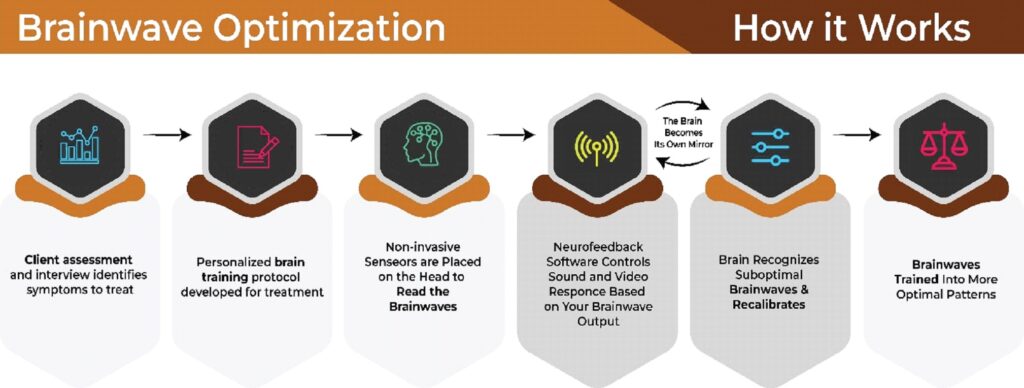
Brainwave Optimization
How it works

Client assessment
Client assessment and interview identifies symptoms to treat

brain training protocol
Personalized brain training protocol developed for treatment

Non-invasive sensor
Non-invasive sensor are placed on the head to Read the Brainwaves

Neurofeedback software
Neurofeedback software control sound and video response Based on your Brainwave Output
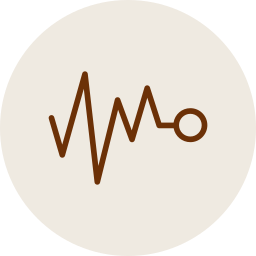
Brainwave & Recalibrates
Brain Recognize Suboptimal Brainwave & Recalibrates

Optimal Patterns
Brainwave Trained Into More Optimal Patterns
